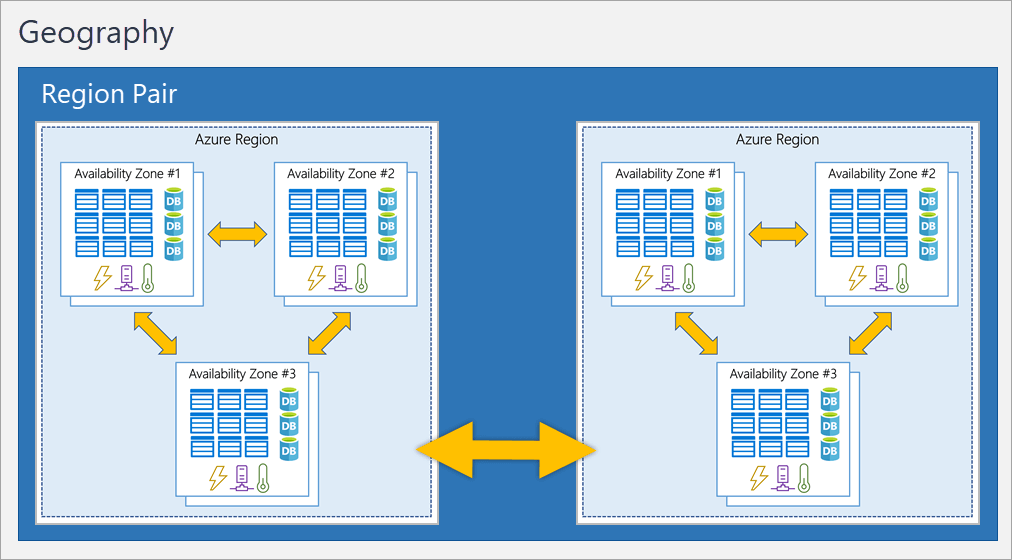To create and use Azure services, you need an Azure subscription.
You also have the option to create a new subscription, which gives you the ability to begin paying for Azure services that you require but are above and beyond the capabilities of a free account.
A well-known example of a public cloud is Microsoft Azure. In a public cloud, you and other companies, known as “tenants,” share the same hardware, storage, and network devices.
The datacenters are the first step in building Azure’s physical infrastructure.
Each Azure data center is its own standalone facility, outfitted with its own dedicated power supply, cooling system, and network.
Azure is a global cloud service, hence its datacenters are located in many different countries. On the other hand, each of these distinct datacenters is not directly reachable. The datacenters that make up Azure Regions and Azure Availability Zones are organized in such a way as to make it easier for you to achieve resiliency and reliability for the workloads that are vital to your business.
The following is a list of important cloud concepts in Azure:
- Scalability – Allocating and removing resources to meet demand.
- Vertical Scaling: Adding more compute power ( RAM, CPU) is scaling-up, and reducing the same is scaling-down.
- Horizontal Scaling: Adding more instances (VM) is scaling-out, and reducing the same as scaling in.
- Elasticity – auto-scaling – dynamically adjusts capacity to keep services running smoothly
- Agility – ability to react quickly – allows cloud users to allocate and deallocate resources quickly.
- Fault Tolerance – Reliability -Continued operation despite faults or malfunctions..
- Disaster Recovery – Any natural or human-caused disaster that damaged the primary data center.
- High Availability – SLA (Service Level Agreement)
What is Azure geography?
A geographical area that contains multiple Azure Regions is called an Azure geography. A country’s data protection or data privacy law may prohibit the export of certain types of regulated data, such as financial, health care, Political, Biometric data, Genetic data, or Individual personal information. Such information must be stored by your company in the same nation as the operations are being carried out, under local law.
When using Azure to host an app, it’s important to carefully select an Azure geography region so that Microsoft doesn’t keep your data in a different Azure geography region than you requested, with the exception of some non-regional Azure geography services.
What are Regions?
One or more data centers located in close proximity to one another and linked via a low-latency network constitute what is known as a “region.” Microsoft’s Azure Regions are clusters of data centers linked by a low-latency, private network.
What is an Azure Availability Zone?
Availability zones in Azure are the several data centers that make up a given region. There are multiple data centers in each availability zone, each with its own supply of electricity, air conditioning, and network connectivity.
An availability zone acts as a buffer zone. If there is a problem in one area, it won’t affect the other. Private, high-speed fiber-optic networks connect Availability Zone.
All availability zone-enabled regions have at least three distinct availability zones to assure data integrity and availability at all times. Availability zones are supported in some Azure regions, but not all.
Virtual machines, managed drives, load balancers, and SQL databases are the primary targets for availability zones. There are three types of Azure services that can work with availability zones.
Resources can be assigned to a specific area using “zonal services” (for example, VMs, managed disks, and IP addresses).
A platform with automatic zone-to-zone replication to ensure service availability is called “Zone-redundant services“ (for example, zone-redundant storage, SQL Database).
Non-regional services: Azure’s global footprint ensures that services are available at all times, regardless of where you are located.
What is an Azure Region pairs?
Even with the added resilience that availability zones give, it is still conceivable for a single region to be hit by an incident that is so significant that it affects many availability zones within that region. Azure offers what it calls “Region Pairs” to provide an additional layer of resiliency.
This strategy enables the duplication of resources across a territory, reducing interruptions from natural catastrophes, civil unrest, power failures, or physical network outages that affect an entire region. When one region in a pair is hit by a natural disaster, services fail over to the other.
What are Sovereign Regions?
Due to the fact that it was designed to manage compliance or legal purposes, there will no longer be any confusion :).
Azure sovereign regions include:
- US DoD Central, US Gov Virginia, US Gov Iowa, and more: These regions are physical and logical network-isolated instances of Azure for U.S. government agencies and partners. These data centers are operated by screened U.S. personnel and include additional compliance certifications.
- China East, China North, and more: These regions are available through a unique partnership between Microsoft and 21Vianet, whereby Microsoft doesn’t directly maintain the data centers.
What are Azure resources, resource groups, subscriptions, and management groups?
Resources are grouped into resource groups, and resource groups are grouped into subscriptions, and then all are grouped into the management group.
To organize your resources into a hierarchy for unified policy and access management, you can create a configurable structure of management groups and subscriptions.
A single resource can only be in one resource group at a time.
A Resource groups can’t be nested.
If you delete a resource group, all the resources will be deleted.
subscriptions are a unit of management, billing, and scale.
Two types of subscription boundaries :Billing boundary and Access control boundary
Subscriptions are organised into management groups and governed.
Resource group and management group, Subscription : Simply Inherit settings for manage complaince effectively
Reference Image :





